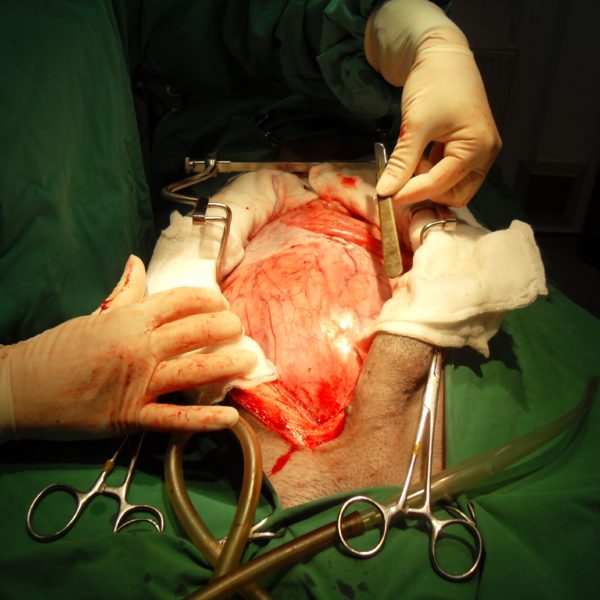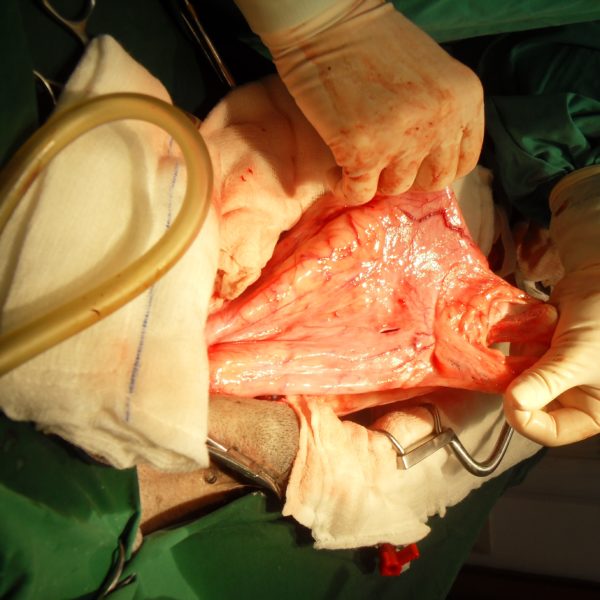Paraprostatic cysts (PCs) are large structures that develop between the prostate gland and urinary bladder.
PCs are believed to develop from embryologic remnants of the female reproductive tract (Müllerian duct remnant) found in males that become fluid-filled.
PCs develop predominantly in sexually intact medium to large breed dogs.
Large cysts may result in abdominal distention and clinical signs usually become apparent only when the cyst reaches a size sufficient to cause compression on the adjacent organs of the caudal abdomen or inside the pelvic canal which may result in dysuria, urinary retention, dyschezia, and ribbon-likefeces.
Preferred treatment of a para-prostatic cyst is surgical removal and castration.




